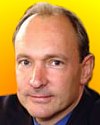
Born 8 Jun 1955. quotes
English computer scientist who invented the World Wide Web and director of the World Wide Web Consortium, which oversees its continued development. In 1984, he took up a fellowship at CERN, to work on distributed real-time systems for scientific data acquisition and system control. While there, he proposed (1989) a global hypertext project, to be known as the World Wide Web, which permitted people to collaborate by sharing knowledge in a web of hypertext documents. On 6 Aug 1991, the first World Wide Web site was made available to the Internet at large, giving information on a browser and how to set up a Web server. He then expanded its reach, always nonprofit, to become an international mass medium.«
English computer scientist who invented the World Wide Web and director of the World Wide Web Consortium, which oversees its continued development. In 1984, he took up a fellowship at CERN, to work on distributed real-time systems for scientific data acquisition and system control. While there, he proposed (1989) a global hypertext project, to be known as the World Wide Web, which permitted people to collaborate by sharing knowledge in a web of hypertext documents. On 6 Aug 1991, the first World Wide Web site was made available to the Internet at large, giving information on a browser and how to set up a Web server. He then expanded its reach, always nonprofit, to become an international mass medium.«
Weaving the Web: The Original Design and Ultimate Destiny of the World Wide Web, by Tim Berners-Lee. - book suggestion.
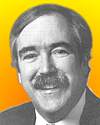
Born 8 Jun 1947.
American developmental biologist who shared the 1995 Nobel Prize for Physiology or Medicine, with geneticists Edward B. Lewis and Christiane Nüsslein-Volhard, for discovering the genetic controls of early embryonic development. Wieschaus worked together with Nüsslein-Volhard examining mutations in 40,000 fruit fly families. They discovered (1980) that about 5,000 of the fly's 20,000 genes are important to embryonic development and about 140 are essential. They formed the widely accepted model that three sets of genes control subdivision in the developing embryo: gap genes, pair-rule genes and segment-polarity genes. Their work helped scientists to better understand congenital mutations in other animals, including humans.
American developmental biologist who shared the 1995 Nobel Prize for Physiology or Medicine, with geneticists Edward B. Lewis and Christiane Nüsslein-Volhard, for discovering the genetic controls of early embryonic development. Wieschaus worked together with Nüsslein-Volhard examining mutations in 40,000 fruit fly families. They discovered (1980) that about 5,000 of the fly's 20,000 genes are important to embryonic development and about 140 are essential. They formed the widely accepted model that three sets of genes control subdivision in the developing embryo: gap genes, pair-rule genes and segment-polarity genes. Their work helped scientists to better understand congenital mutations in other animals, including humans.
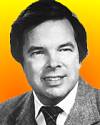
Born 8 Jun 1936.
American physicist who was awarded the 1982 Nobel Prize for Physics for his development of a general procedure for constructing improved theories concerning the transformations of matter called continuous, or second-order, phase transitions. These take place at characteristic temperatures (or pressures), but unlike first-order transitions they occur throughout the entire volume of a material as soon as that temperature (called the critical point) is reached. One example of such a transition is the complete loss of ferromagnetic properties of certain metals when they are heated to their Curie points (about ºC for iron). Wilson's work provided a mathematical strategy for constructing theories that could apply to physical systems near the critical point.
American physicist who was awarded the 1982 Nobel Prize for Physics for his development of a general procedure for constructing improved theories concerning the transformations of matter called continuous, or second-order, phase transitions. These take place at characteristic temperatures (or pressures), but unlike first-order transitions they occur throughout the entire volume of a material as soon as that temperature (called the critical point) is reached. One example of such a transition is the complete loss of ferromagnetic properties of certain metals when they are heated to their Curie points (about ºC for iron). Wilson's work provided a mathematical strategy for constructing theories that could apply to physical systems near the critical point.
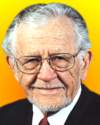
Born 8 Jun 1918. quotes
John Dombrowski Roberts is an American chemist who has been a leading innovator in the use of nuclear magnetic resonance (NMR) spectroscopy. Chemical and Engineering News listed him as one of the 75 most influential chemists in the 75 years up to the 1998 publication date. His interests have included unravelling the mechanisms of organic reactions and the chemistry of small-ring compounds. He applied NMR in studies of conformations, the arrangement in space of the atoms bonded in a molecule, and how that is altered by interactions with neighboring atoms, by electrostatic, hydrogen-bonding and solvent effects. As some molecules can exist in more than one spatial arrangement, and switch between them, an equilibrium between them can be observed. This knowledge helps understand how reactions with approaching molecules can proceed, or be hindered.«
John Dombrowski Roberts is an American chemist who has been a leading innovator in the use of nuclear magnetic resonance (NMR) spectroscopy. Chemical and Engineering News listed him as one of the 75 most influential chemists in the 75 years up to the 1998 publication date. His interests have included unravelling the mechanisms of organic reactions and the chemistry of small-ring compounds. He applied NMR in studies of conformations, the arrangement in space of the atoms bonded in a molecule, and how that is altered by interactions with neighboring atoms, by electrostatic, hydrogen-bonding and solvent effects. As some molecules can exist in more than one spatial arrangement, and switch between them, an equilibrium between them can be observed. This knowledge helps understand how reactions with approaching molecules can proceed, or be hindered.«
The Right Place at the Right Time, by John D. Roberts. - book suggestion.
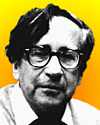
Born 8 Jun 1918; died 27 Oct 1980 at age 62. quotes
Bernd Theodore Matthias was a German-American physicist who was a researcher in superconductivity, and discovered nearly 1,000 superconducting materials. He completed his education up to a Ph.D. degree (1943) in Germany, and immigrated to the U.S. (1947) working at M.I.T., then Bell Labs. He began low-temperature physics at the University of Chicago (1949). By 1961, he had moved to the University of California, San Diego and founded the Institute for the Study of Matter there (1962). By finding superconductivity, ferroelectricity and ferromagnetism in many hundreds of new materials, he showed these properties to be common occurences in nature, rather than in the rare instances he knew at the beginning of his work in the field. His success in finding new examples was said to be based on his intuition of the relationships he could see in the Periodic Table.«
Bernd Theodore Matthias was a German-American physicist who was a researcher in superconductivity, and discovered nearly 1,000 superconducting materials. He completed his education up to a Ph.D. degree (1943) in Germany, and immigrated to the U.S. (1947) working at M.I.T., then Bell Labs. He began low-temperature physics at the University of Chicago (1949). By 1961, he had moved to the University of California, San Diego and founded the Institute for the Study of Matter there (1962). By finding superconductivity, ferroelectricity and ferromagnetism in many hundreds of new materials, he showed these properties to be common occurences in nature, rather than in the rare instances he knew at the beginning of his work in the field. His success in finding new examples was said to be based on his intuition of the relationships he could see in the Periodic Table.«
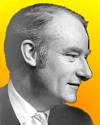
Born 8 Jun 1916; died 28 Jul 2004 at age 88. quotes
Francis Harry Compton Crick was an English biochemist and biophysicist who shared (with James Watson and Maurice Wilkins) the 1962 Nobel Prize for Physiology or Medicine for their determination of the molecular structure of deoxyribonucleic acid (DNA), the chemical substance ultimately responsible for hereditary control of life functions. Crick and Watson began their collaboration in 1951, and published their paper on the double helix structure on 2 Apr 1953 in Nature. This accomplishment became a cornerstone of genetics and was widely regarded as one of the most important discoveries of 20th-century biology.
Francis Harry Compton Crick was an English biochemist and biophysicist who shared (with James Watson and Maurice Wilkins) the 1962 Nobel Prize for Physiology or Medicine for their determination of the molecular structure of deoxyribonucleic acid (DNA), the chemical substance ultimately responsible for hereditary control of life functions. Crick and Watson began their collaboration in 1951, and published their paper on the double helix structure on 2 Apr 1953 in Nature. This accomplishment became a cornerstone of genetics and was widely regarded as one of the most important discoveries of 20th-century biology.
What Mad Pursuit: A Personal View of Scientific Discovery, by Francis Crick. - book suggestion.
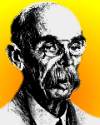
Born 8 Jun 1851; died 31 Dec 1940 at age 89.
Jacques-Arsène d' Arsonval was a French physician and physicist known for his pioneering researches in therapeutic use of electricity, heat, and light. He designed the first reflecting moving-coil galvanometers for measurement of tiny electric currents (1882). His early research into animal heat, muscle contraction, and electrophysiology led to his invention of devices used to treat diseases with electricity. He created high-frequency currents used to treat diseases of the skin and mucous membranes ('d'Arsonvalization', 1890), and showed that the human body could conduct an alternating current strong enough to light an electric lamp (1892).
Jacques-Arsène d' Arsonval was a French physician and physicist known for his pioneering researches in therapeutic use of electricity, heat, and light. He designed the first reflecting moving-coil galvanometers for measurement of tiny electric currents (1882). His early research into animal heat, muscle contraction, and electrophysiology led to his invention of devices used to treat diseases with electricity. He created high-frequency currents used to treat diseases of the skin and mucous membranes ('d'Arsonvalization', 1890), and showed that the human body could conduct an alternating current strong enough to light an electric lamp (1892).
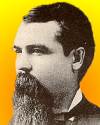
1893
Born 8 Jun 1848; died 4 Aug 1911 at age 63.
American agricultural scientist who promoted use of the cylindrical tower silo and invented a gravity system of ventilation for dairy barns that was widely used until electrically powered blowers became commonly available. He researched in wide-ranging applications of physics to agriculture. Especially interested in soil physics, he studied water-holding capacities, moisture requirements of plants, aeration, movement of water in soils, and soil fertility. King demonstrated that cylindrical silo structures were not only the strongest form, but also reduced spoilage. He studied the efficiency of farm machinery and the draft of farm implements, the construction of rural roads, and the first year-long study of the power generated by farm windmills.
American agricultural scientist who promoted use of the cylindrical tower silo and invented a gravity system of ventilation for dairy barns that was widely used until electrically powered blowers became commonly available. He researched in wide-ranging applications of physics to agriculture. Especially interested in soil physics, he studied water-holding capacities, moisture requirements of plants, aeration, movement of water in soils, and soil fertility. King demonstrated that cylindrical silo structures were not only the strongest form, but also reduced spoilage. He studied the efficiency of farm machinery and the draft of farm implements, the construction of rural roads, and the first year-long study of the power generated by farm windmills.
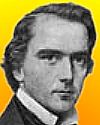
Born 8 Jun 1832; died 3 May 1888 at age 55.
British engineer who superintended the laying of the first Atlantic telegraph cable. He supervised the laying of hundreds of miles of underground telegraph cables, throughout the British Isles, including the first cable under the sea between Scotland and Ireland, when just 21. He joined the new Atlantic Telegraph company as chief engineer to lay the first transatlantic cable. The first attempt (1857) ended when the cable broke 280 miles off the coast. The second attempt, a year later and was initially successful but with a weak electric signal. On 16 Aug 1858, Queen Victoria sent a message to U.S. President James Buchanan. This cable failed within a few weeks. He acted as consulting engineer for the second and third transatlantic cables of 1865 and 1866.
British engineer who superintended the laying of the first Atlantic telegraph cable. He supervised the laying of hundreds of miles of underground telegraph cables, throughout the British Isles, including the first cable under the sea between Scotland and Ireland, when just 21. He joined the new Atlantic Telegraph company as chief engineer to lay the first transatlantic cable. The first attempt (1857) ended when the cable broke 280 miles off the coast. The second attempt, a year later and was initially successful but with a weak electric signal. On 16 Aug 1858, Queen Victoria sent a message to U.S. President James Buchanan. This cable failed within a few weeks. He acted as consulting engineer for the second and third transatlantic cables of 1865 and 1866.
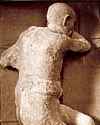
Born 8 Jun 1823; died 28 Jan 1896 at age 72.
Italian archaeologist whose systematic excavation at Pompeii helped to preserve much of the ancient city as nearly intact as possible and contributed significantly to modern archaeological methods. Fiorelli's initial work at Pompeii was completed in 1848. With his next excavations at Pompeii (1860), he pioneered his meticulous method of studying archaeological strata; observation, recording, preservation (including building a museum), and reporting were its fundamental features. In particular he studied the materials and building methods utilized at Pompeii. It was his idea to pour liquid plaster into the spaces left by decomposed bodies in the beds of ashes to produce casts representing the original victims.
Italian archaeologist whose systematic excavation at Pompeii helped to preserve much of the ancient city as nearly intact as possible and contributed significantly to modern archaeological methods. Fiorelli's initial work at Pompeii was completed in 1848. With his next excavations at Pompeii (1860), he pioneered his meticulous method of studying archaeological strata; observation, recording, preservation (including building a museum), and reporting were its fundamental features. In particular he studied the materials and building methods utilized at Pompeii. It was his idea to pour liquid plaster into the spaces left by decomposed bodies in the beds of ashes to produce casts representing the original victims.
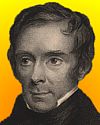
Born 8 Jun 1783; died 21 Oct 1862 at age 79. quotes
(1st Baronet) British physiologist and surgeon whose name is applied to certain diseases of the bones and joints. As one of the outstanding surgeons of 19th-century London, he opposed the prevailing practice of indiscriminate amputation, always trying to save the limb instead. He pioneered the surgery of varicose veins. In 1814, he described synovitis in the knee joint. In his book Pathological and Surgical Observations on the Diseases of the Joints (1818), he traced the beginnings of disease in the different tissues that form a joint and to give an exact value to the symptom of pain as evidence of organic disease. This work led to conservative measures in the treatment of diseases of the joints, with a consequent reduction in the number of amputations and the saving of many limbs and lives. In 1843 a tuberculous abscess in the head of the tibia, Brodie's abscess. He lectured on hysterical pain. Brodie's knee came to refer to a condition of stiff knees frequently observed in hysterical patients. From research with animals, he disproved the chemical theory of animal heat, which held that respiration was the immediate source of heat production.
(1st Baronet) British physiologist and surgeon whose name is applied to certain diseases of the bones and joints. As one of the outstanding surgeons of 19th-century London, he opposed the prevailing practice of indiscriminate amputation, always trying to save the limb instead. He pioneered the surgery of varicose veins. In 1814, he described synovitis in the knee joint. In his book Pathological and Surgical Observations on the Diseases of the Joints (1818), he traced the beginnings of disease in the different tissues that form a joint and to give an exact value to the symptom of pain as evidence of organic disease. This work led to conservative measures in the treatment of diseases of the joints, with a consequent reduction in the number of amputations and the saving of many limbs and lives. In 1843 a tuberculous abscess in the head of the tibia, Brodie's abscess. He lectured on hysterical pain. Brodie's knee came to refer to a condition of stiff knees frequently observed in hysterical patients. From research with animals, he disproved the chemical theory of animal heat, which held that respiration was the immediate source of heat production.
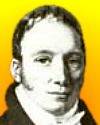
Born 8 Jun 1772; died 12 Jul 1850 at age 78. quotes
Scottish civil engineer who in 1797 succeeded his stepfather, Thomas Smith, as a member of the Scottish Lighthouse Board. In that capacity until 1843, he designed and built lighthouses (1797-1843). His first and greatest was the lighthouse at Bell Rock. Subsequently he established a civil engineering practice involved at first in canal, road and rail projects, and later maritime, river and bridge work. As chief executive of the Northern Lighthouse Board (1808-43) he was responsible for the construction and design of at least 23 lighthouses on the Scottish Coastline. He invented intermittent and flashing lights as well as the hydrophore (an instrument for obtaining specimens from water). The writer Robert Louis Stevenson was his grandson.
Scottish civil engineer who in 1797 succeeded his stepfather, Thomas Smith, as a member of the Scottish Lighthouse Board. In that capacity until 1843, he designed and built lighthouses (1797-1843). His first and greatest was the lighthouse at Bell Rock. Subsequently he established a civil engineering practice involved at first in canal, road and rail projects, and later maritime, river and bridge work. As chief executive of the Northern Lighthouse Board (1808-43) he was responsible for the construction and design of at least 23 lighthouses on the Scottish Coastline. He invented intermittent and flashing lights as well as the hydrophore (an instrument for obtaining specimens from water). The writer Robert Louis Stevenson was his grandson.
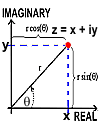
Born 8 Jun 1745; died 25 Mar 1818 at age 72.
Norwegian surveyor and mathematician who demonstrated innovative mathematical skills as a surveyor, mathematically processing the triangulation data and preparing maps. From 1764, he worked for the Royal Danish Academy, which was making a topographical survey of Denmark. In his life career, Caspar advanced his knowledge of algebra, trigonometry and mathematical geometry. On 10 Mar 1797, he presented his only mathematical paper to the Academy, containing the first geometric representation of complex numbers, but it wasn't seen internationally. Jean-Robert Argand, found the method independently, and his publication (1806) was circulated, hence the method is known as an Argand diagram. A complex numbers is shown as a point in a Cartesian plane, with the real portion of the number on the x axis and the imaginary part on the y axis.«[Image: An Argand diagram, known by that name, but priority goes to Wessel.]
Norwegian surveyor and mathematician who demonstrated innovative mathematical skills as a surveyor, mathematically processing the triangulation data and preparing maps. From 1764, he worked for the Royal Danish Academy, which was making a topographical survey of Denmark. In his life career, Caspar advanced his knowledge of algebra, trigonometry and mathematical geometry. On 10 Mar 1797, he presented his only mathematical paper to the Academy, containing the first geometric representation of complex numbers, but it wasn't seen internationally. Jean-Robert Argand, found the method independently, and his publication (1806) was circulated, hence the method is known as an Argand diagram. A complex numbers is shown as a point in a Cartesian plane, with the real portion of the number on the x axis and the imaginary part on the y axis.«[Image: An Argand diagram, known by that name, but priority goes to Wessel.]
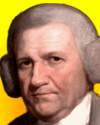
Born 8 Jun 1724; died 28 Oct 1792 at age 68. quotes
English civil engineer who coined the term “civil engineering” (to distinguish from military engineers). He built the third Eddystone Lighthouse, Plymouth, Devon, using dovetailed blocks of portland stone (1756-59). He discovered the best mortar for underwater construction to be limestone with a high proportion of clay. Smeaton also constructed the Forth and Clyde Canal in Scotland between the Atlantic and the North Sea; built bridges in towns including Perth, Banff, and Coldstream, Scotland; and completed Ramsgate harbour, Kent. He introduced cast-iron shafts and gearing into wind and water mills, designed large atmospheric pumping engines for mines, and improved the safety of the diving bell.)
English civil engineer who coined the term “civil engineering” (to distinguish from military engineers). He built the third Eddystone Lighthouse, Plymouth, Devon, using dovetailed blocks of portland stone (1756-59). He discovered the best mortar for underwater construction to be limestone with a high proportion of clay. Smeaton also constructed the Forth and Clyde Canal in Scotland between the Atlantic and the North Sea; built bridges in towns including Perth, Banff, and Coldstream, Scotland; and completed Ramsgate harbour, Kent. He introduced cast-iron shafts and gearing into wind and water mills, designed large atmospheric pumping engines for mines, and improved the safety of the diving bell.)
Smeaton's Tower, by Christopher Severn. - book suggestion.
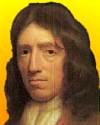
Born 8 Jun 1652; died Mar 1715. quotes
English navigator who recorded descriptions of native cultures as well as coastlines, rivers, and villages during his several voyages of mapping and exploration around the world. He published these, along with natural history observations, including his experience on 4 Jul 1687 when his ship survived a typhoon. This, one of the earliest known European descriptions of a tropical revolving storm, also presented a new understanding that storms somehow move, rather than remain stationary. He collected plants in Brazil, Australia, Timor and New Guinea. His book A New Voyage Round The World contained descriptions of people, places, things, plants, fish, reptiles, birds and mammals. In effect he was an early contributor to scientific exploration.« more
English navigator who recorded descriptions of native cultures as well as coastlines, rivers, and villages during his several voyages of mapping and exploration around the world. He published these, along with natural history observations, including his experience on 4 Jul 1687 when his ship survived a typhoon. This, one of the earliest known European descriptions of a tropical revolving storm, also presented a new understanding that storms somehow move, rather than remain stationary. He collected plants in Brazil, Australia, Timor and New Guinea. His book A New Voyage Round The World contained descriptions of people, places, things, plants, fish, reptiles, birds and mammals. In effect he was an early contributor to scientific exploration.« more
William Dampier, Seaman, Scientist, by Joseph C. Shipman. - book suggestion.
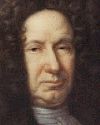
Born 8 Jun 1625; died 14 Sep 1712 at age 87.
Italian-French astronomer who discovered (1675) the dark gap subdividing Saturn’s rings into two parts, now known as Cassini’s Division. He stated that Saturn’s ring, believed by Huygens to be a single body, was actually composed of small particles. Cassini also discovered four of Saturn's moons: Iapetus (Sep 1671), Rhea (1672) and on 21 Mar 1684, Tethys and Dione. He compiled new tables (1662) on the annual motion of the Sun. He observed shadows of four Galilean satellites on Jupiter (1664), and measured its rotation period by studying the bands and spots on its surface. He determined the period of rotation of Mars (1666), and attempted the same for Venus. His son Jacques was also an astronomer.«[A.k.a. Gian Domenico Cassini.]
Italian-French astronomer who discovered (1675) the dark gap subdividing Saturn’s rings into two parts, now known as Cassini’s Division. He stated that Saturn’s ring, believed by Huygens to be a single body, was actually composed of small particles. Cassini also discovered four of Saturn's moons: Iapetus (Sep 1671), Rhea (1672) and on 21 Mar 1684, Tethys and Dione. He compiled new tables (1662) on the annual motion of the Sun. He observed shadows of four Galilean satellites on Jupiter (1664), and measured its rotation period by studying the bands and spots on its surface. He determined the period of rotation of Mars (1666), and attempted the same for Venus. His son Jacques was also an astronomer.«[A.k.a. Gian Domenico Cassini.]
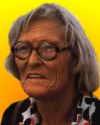
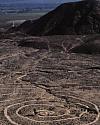
German-born Peruvian mathematician and archaeologist who was the self-appointed keeper of the Nazca Lines, a series of desert ground drawings over 1,000 years old, near Nazcain in southern Peru. For 50 years the "Lady of the Lines" studied and protected these etchings of animals and geometric patterns in 60 km (35 mi) of desert. Protected by a lack of wind and rain, the figures are hundreds of feet long best seen from the air. She investigated the Nazca lines from a mathematical point of view. Death at age 95 interrupted her new mathematical calculations: the possibility that the lines predicted cyclical natural phenomena like El Nino, a weather system that for centuries has periodically caused disastrous flooding along the Peruvian coast.[Image right: source ]
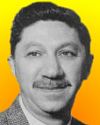
Died 8 Jun 1970 at age 62 (born 1 Apr 1908). quotes
American psychologist who believed that man has a natural drive to healthiness, and developed this into his self-actualization theory of psychology. Thus, man knows more than his physical needs to maintain health, but also knows intuitively what he needs to become mentally healthy and happy. In his early career, working with monkeys, he observed that some needs take precedence over others, for example, thirst takes priority over hunger. Later, he created his now famous hierarchy of needs. Beyond the details of air, water, food, and sex, he laid out five broader layers: physiological needs, needs for safety and security, needs for love and belonging, needs for esteem, and the need to actualize the self, in that order.«
American psychologist who believed that man has a natural drive to healthiness, and developed this into his self-actualization theory of psychology. Thus, man knows more than his physical needs to maintain health, but also knows intuitively what he needs to become mentally healthy and happy. In his early career, working with monkeys, he observed that some needs take precedence over others, for example, thirst takes priority over hunger. Later, he created his now famous hierarchy of needs. Beyond the details of air, water, food, and sex, he laid out five broader layers: physiological needs, needs for safety and security, needs for love and belonging, needs for esteem, and the need to actualize the self, in that order.«
The Farther Reaches of Human Nature, by Abraham H. Maslow. - book suggestion.
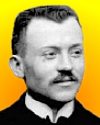
Died 8 Jun 1962 at age 82 (born 13 Jul 1879).
Marie-Eugène-Léon Freyssinet was a French civil engineer who successfully developed pre-stressed concrete, that is, concrete beams or girders in which steel wire is embedded under tension, greatly strengthening the concrete member. The prestressing technique was devised to overcome difficulties in executing curved shapes in reinforced concrete. More an engineer than an architect, Freyssinet began creating innovative architecture using reinforced concrete as his main material, such as airship hangars at Orly Airport, France (1921), bridges and industrial buildings. His first use of pre-stressed concrete was for the renovation of the transatlantic pier at Le Havre (1933-35).
Marie-Eugène-Léon Freyssinet was a French civil engineer who successfully developed pre-stressed concrete, that is, concrete beams or girders in which steel wire is embedded under tension, greatly strengthening the concrete member. The prestressing technique was devised to overcome difficulties in executing curved shapes in reinforced concrete. More an engineer than an architect, Freyssinet began creating innovative architecture using reinforced concrete as his main material, such as airship hangars at Orly Airport, France (1921), bridges and industrial buildings. His first use of pre-stressed concrete was for the renovation of the transatlantic pier at Le Havre (1933-35).
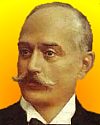
Died 8 Jun 1920 at age 69 (born 27 Aug 1850).
Italian physicist who showed that radio waves displayed characterics of light wave behaviour in the manner of reflection, refraction, polarization and interference. Thus the nature of radio waves was similar to light, but with the difference of greater wavelength and a part of the same electromagnetic spectrum as light. He discovered magnetic hysteresis (1880). He was the first person to generate microwaves, and opened a whole new area of the electromagnetic spectrum to research and subsequent application. By 1900 also began work on X-rays. In 1903 he wrote the first paper on wireless telegraphy. His improvements on the work of Hertz were passed along to Guglielmo Marconi, who studied in Righi's laboratory.
Italian physicist who showed that radio waves displayed characterics of light wave behaviour in the manner of reflection, refraction, polarization and interference. Thus the nature of radio waves was similar to light, but with the difference of greater wavelength and a part of the same electromagnetic spectrum as light. He discovered magnetic hysteresis (1880). He was the first person to generate microwaves, and opened a whole new area of the electromagnetic spectrum to research and subsequent application. By 1900 also began work on X-rays. In 1903 he wrote the first paper on wireless telegraphy. His improvements on the work of Hertz were passed along to Guglielmo Marconi, who studied in Righi's laboratory.
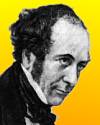
Died 8 Jun 1882 at age 74 (born 8 May 1808). quotes
British civil engineer best known for researches in ship design. He designed the first seagoing battleship built entirely of iron. He was the first to record an observation of a soliton, while conducting experiments to determine the most efficient design for canal boats. In Aug 1834, he observed what he called the “Wave of Translation,” a solitary wave formed in the narrow channel of a canal which continues ahead after a canal boat stops. He also made the first experimental observation of the “Doppler shift” of sound frequency as a train passes (1848). He designed (with Brunel) the Great Eastern and built it; he designed the Vienna Rotunda and helped to design Britain's first armoured warship, the Warrior.
British civil engineer best known for researches in ship design. He designed the first seagoing battleship built entirely of iron. He was the first to record an observation of a soliton, while conducting experiments to determine the most efficient design for canal boats. In Aug 1834, he observed what he called the “Wave of Translation,” a solitary wave formed in the narrow channel of a canal which continues ahead after a canal boat stops. He also made the first experimental observation of the “Doppler shift” of sound frequency as a train passes (1848). He designed (with Brunel) the Great Eastern and built it; he designed the Vienna Rotunda and helped to design Britain's first armoured warship, the Warrior.
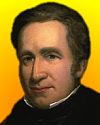

English architect who designed the Crystal Palace for the Great Exhibition of 1851 in Hyde Park, London. In 1832, Paxton became Manager to the Duke of Devonshire's estates where he created lakes, arboreta, and greenhouses. Between 1836-40 he designed and built a large greenhouse, at the time the largest glass building in the world. In 1844 he constructed the "emperor fountain", at 280 feet the tallest in Europe. He also built a second smaller glasshouse for a giant Amazonian lily where it flowered in 1849, the first time ever in cultivation. Paxton's superiority in conservatory design led to his work as the innovative architect of the Crystal Palace. In his later years he was active in urban planning projects.[Image right: Great Exhibition, interior of Crystal Palace. Although EB gives his birth year as 1801, Paxton's gravestone shows 1803. John Anthony explains, in his 1973 biography, that the confusion began when Paxton had felt the need to appear older to gain employment at the Horticultural Society (1823), and misrepresented to them that he was born in 1801.]
The Busiest Man in England: A Life of Joseph Paxton, Gardener, Architect & Victorian Visionary, by Kate Colquhoun. - book suggestion.
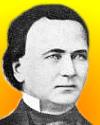
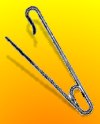
American inventor who designed the first repeating rifle. Hunt began inventing in his late teens with a machine to spin flax, which he patented in 1826. He also invented a fire engine gong (1827), a forest saw, a stove that burned hard coal and paper collars. In 1834, he invented a sewing machine with a lock stitch, which he failed to patent until it was too late. Although his inventions were worthwhile, he failed to market them effectively. In 1849, Hunt made the first safety pin out of a piece of brass wire about eight inches long, coiled at the center and shielded at one end. He patented this invention as a “dress pin”, and sold the rights to it for $400. His rifle design of 1849 had a tubular magazine beneath the barrel used with his previously-patented self-propelled “rocket” ball ammunition.« more
Necessity's Child: The Story of Walter Hunt, America's Forgotten Inventor, by Joseph Nathan Kane. - book suggestion.
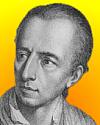
Died 8 Jun 1768 at age 50 (born 9 Dec 1717).
Johann Joachim Winckelmann was a German archaeologist and art historian who is regarded as the father of modern archaeology because of his observations of the excavations of Pompeii and Herculaneum in Italy (made during three visits). The excavations, started in 1748, were carried out secretly to find art objects. Many artefacts and wall paintings were removed for the private collection of the Bourbon king Charles III (reigned 1759-88). Winckelmann protested the despoiling. He produced scholarly studies of archaeology and anquities and redefined archeology as a history of ancient art. For these, he is often credited with being the first modern art historian. He was murdered in Trieste by a former-convict cook while robbing him.
Johann Joachim Winckelmann was a German archaeologist and art historian who is regarded as the father of modern archaeology because of his observations of the excavations of Pompeii and Herculaneum in Italy (made during three visits). The excavations, started in 1748, were carried out secretly to find art objects. Many artefacts and wall paintings were removed for the private collection of the Bourbon king Charles III (reigned 1759-88). Winckelmann protested the despoiling. He produced scholarly studies of archaeology and anquities and redefined archeology as a history of ancient art. For these, he is often credited with being the first modern art historian. He was murdered in Trieste by a former-convict cook while robbing him.

In 2009, the first United Nations-recognized World Oceans Day was celebrated. As described by the Oceans Project, it is now an annual day to recognize “the ocean, its importance in our lives, and how we can protect it.” Canada proposed the concept of a World Ocean Day, at the Earth Summit in Rio de Janeiro in 1992. The United Nations General Assembly passed a resolution passed in Dec 2008, to give it official recognition (using the plural word in its name). The annual World Oceans Day increases awareness in the vital role of these bodies of water in our lives, prevent pollution, and to encourage action to protect the resources for future generations.«

In 1992, the U.N. Commission on Sustainable Development was created as one of the most important accomplishments of the International Earth Summit in Rio de Janeiro, Brazil. The agency was formed to monitor and report on implementation of the Earth Summit agreements at the local, national, regional and international levels. More than 100 heads of state signed the Framework Convention on Climate Change and the Convention on Biological Diversity; endorsed the Rio Declaration and the Forest Principles; and adopted Agenda 21, a 300-page plan for achieving sustainable development in the 21st century.

age 21
In 1983, the first triplets resulting from in-vitro fertilization were born at the Flinders Medical Centre in Adelaide, Australia, named Aaron, Jessica, and Chenara Guare. As adults, 21 years later, they were respectively a diesel mechanic apprentice, a cheerleader for Norwood Football Club and a worker at National Pharmacies. Britain's first test-tube triplets - a girl and two boys - were born to mother Anne Maaye on 21 Jan 1984, while in the same year, the world's first test tube quadruplets were born in Melbourne, Australia and the third set of test tube triplets in Australia were born in Perth.[Image: Guare triplets age 21]

In 1959, the first official U.S. missile mail was launched from the submarine USS Barbero at about 100 miles off the Atlantic Coast to the Mayport Auxiliary Naval Station near Jacksonville, Florida. The 36-foot Regulus 1 winged missile carried 3,000 letters, delivering about 22 minutes after launch. The letters included one from President Eisenhower. The mail carried four-cent stamps. Rocket airmail in the U.S. had its first launch in the U.S. on 23 Feb 1936 in an 11-foot rocket with 15-foot wingspread fueled by liquid oxygen and alcohol. Postmaster General Arthur E. Summerfield declared the experiment a success: “Before man reaches the moon, mail will be delivered within hours from New York to California, to Britain, to India or Australia.”*
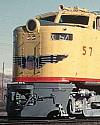


McMillan
In 1940, discovery of element 93, neptunium (symbol Np) was announced by Edwin M. McMillan and Philip H. Abelson working at the University of California at Berkeley. While studying nuclear fission, McMillan had discovered neptunium as a decay product of uranium-239 by beta decay. They were able to prove that its chemical and nuclear properties were unique, and thus a new element. Its later isolation in metallic form (Oct 1944) provided final proof. It was named neptunium after Neptune, the planet immediately beyond Uranus. As the first element heavier than uranium, it was called a transuranium element. For his discovery, McMillan was awarded a share of the Nobel Prize for Chemistry in 1951. Later, when discovered, element 94 was named plutonium, for the planet beyond Neptune.«[Image: McMillan recreating the search for neptunium at the time of the announcement of the discovery]
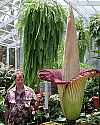
In 1937, a specimen of the world's largest flower, first bloomed in the U.S. in the NY Botanical Garden. The giant Sumatran Titan Arum, Amorphophallus titanum, measured 8½-ft high and 4-ft diam. Its putrid rotting-corpse fragrance repelled visitors. Native in Sumatran jungles of Indonesia, it is known there as the “corpse flower.” Dr. Odoardo Beccari, an Italian botanist, was the first western expert to obtain a sample of the Titan Arum in the Pading Province on 5 Sep 1878. Seeds he sent back to his patron, the Marchese Corsi Salviati were grown in Italy, and a few plants were at Beccari's request sent to Kew Gardens in England in Jun 1879. One of those seedlings flowered in June 1887. Another plant bloomed there in 1926, to wide attention.[Image: Titan Arum in full bloom at Fairchild Tropical Botanical Garden, 15 May 2001, at 80-1/4 in. This is the first in the U.S. to produce a second bloom, having first flowered at 5-ft in 1998.]
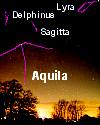
In 1918, Nova Aquila, the brightest nova since Kepler's nova of 1604, was discovered in the constellation of Aquila the eagle, a 1st magnitude star 6 degrees north of the Scutum star cloud. For the months that it shone, it was the brightest star in the sky, briefly half a million times brighter than the sun, but seen from 1200 light years (70,000 trillion miles) away. Between 1899 and 1936 there were 20 fairly bright novae, and five of those were in this same small area of the sky, the constellation Aquila. Seven years later Nova Aquila had faded to a bluish star apparently much smaller and denser than our sun. (Aquila belonged to Zeus, and was the eagle that carried the mortal Ganymede to the heavens to serve as Zeus' cup bearer.)
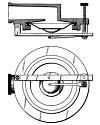
In 1915, Thomas A. Edison received a patent on a “Sound-Recording Apparatus” (U.S. No. 1,142,507) one of many patents he held in this field. This patent presented improvements on this design as given in two earlier filings in the same year. The apparatus described is a flexible circular diaphragm bearing against a stylus at its centre that is held on a spring lever secured to a rigid support. It was so designed to provide sensitivity for recording sounds, whether weak or strong, and to record them more truly. The diaphragm is mounted on a sensitive support across an opening in the sound box. Its form is with a flexible annular portion and a stiff central region, to cause movement similar to a piston. Suggested materials included acetyl cellulose or paper.«
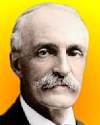
Pinchot
In 1908, the U.S. National Conservation Commission was appointed by President Roosevelt which prepared the first inventory of the natural resources of the United States. It was divided into four sections, water, forests, lands, and minerals, each section having a chairman, and with Gifford Pinchot as chairman of the executive committee. Its three-volume report was given at the the Joint Conservation Congress (Dec 1908), attended by 20 governors, representatives of 22 state conservation commissions, and leaders from various national organzations. These were outcomes of the three-day Conference of Governors which opened at the White House on 13 May 1908, called by Roosevelt to consider the problems of conservation.
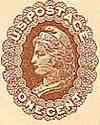
In 1872, the first U.S. postal card was authorized by Act of Congress (17 Stat. L. 304) as part of major legislation to transform the U.S. Post Office Department into an executive department. On a light buff card, about 3" x 5", a brown, one cent stamp was printed in the top right corner. Its design was a profile of the Goddess of Liberty, within an engraved border. They were first issued 1 May 1873. For the next issue (24 Aug 1885), the stamp pictured Thomas Jefferson. Later Acts authorized double postcards (3 Mar 1879) and for international use (11 Jun 1880). The first U.S. airmail postcard (10 Jan 1949) had a four-cent stamp showing an orange-red eagle in flight. The Austrian Postal Aministration had been the first in the world to authorize a Correspondz Karte (correspondance card) on 1 Oct 1869.«[Image: detail from postcard showing Goddess of Liberty stamp design.]
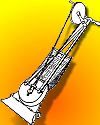
In 1869, Ives W. McGaffney of Chicago obtained the first American patent for a "sweeping machine" (U.S. No. 91,145). This first suction-type vacuum cleaner was a light hand-powered device for surface cleaning. The mechanism consists of a handle to turn a pulley which uses a belt to drive a fan in a casing, thus producing a strong current of air, "controlled to take up dust and dirt, and carry the fine particles into a porous air-chamber, so constructed as to allow the air to escape while the dust is retained." The air-chamber could be "a bag made of fine and firm cotton, with an elastic band or cord fixed in a hem around its mouth, which is drawn closely over the discharge-opening of the fan." Its top end is suspended on a cross-bar on the handle.
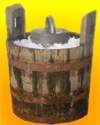
In 1786, the first advertisement for commercially-made ice cream in the U.S. was published in the New York Post Boy, offering the frozen treat at the City Tavern by Joseph Crowe. The first commercially made ice cream is attributed to Mr. Hall of 76 Chatham Street (now Park Row). For ice-cream made at home, a date of 17 May 1784 is recorded in George Washington's expense ledger for the purchase of “a cream machine for ice”. Thomas Jefferson had ice cream made from a French recipe that was popular at Monticello. A hand-written copy of his recipe at the Library of Congress dates from the 1780s. It used: 2 bottles of good cream, 6 egg yolks, ½-lb sugar and a stick of vanilla, mixed and boiled on the fire, strained through a towel, closed in a sorbetière which was later submerged in a bucket of salted ice.« [Image: A sorbetière shown in a wooden bucket filled with ice. In use, ice would cover the top.] more
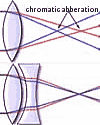
In 1758, optician John Dolland, having created achromatic lenses, reported this to the Royal Society. Isaac Newton had described the blurring effect due to chromatic abberation, but could not solve the problem in simple lenses, which was important in the preparation of lenses for telescopes and microscopes. A concave face of a lens of flint glass (which has a greater color dispersion than crown glass) is cemented to a convex face of a crown glass lens. Thus the dispersion properties causing chromatic aberration are removed from both lenses simultaneously. Although Dollond patented the discovery of the achromatic lens in the mid-18th century, it is widely believed that he was not its inventor, but learned about it from lens maker George Bass.
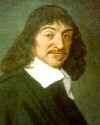
In 1637, the book Discourse on Method of Rightly Conducting the Reason, and Seeking Truth in the Sciences, was published by René Descartes, regarded as a major work in science and mathematics. He expressed his disappointment with traditional philosophy and with the limitations of theology; only logic, geometry and algebra hold his respect, because of the utter certainty which they can offer. Ushering in the “scientific revolution” of Galileo and Newton, Descartes' ideas swept aside ancient and medieval traditions of philosophical methods and investigation.
Discourse on Method, by René Descartes. - book suggestion.




